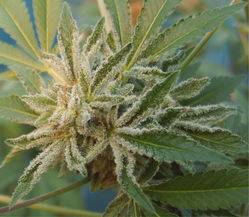Chiefsmokingbud,
I am saying the higher the ability to extract THC from resin or herb, the harder it is to remove the last traces of solvent from the oil.
If you use super critical CO2 as a solvent it is not a factor as just having the materials at room temperature will eliminate the CO2. Any other solvent has to be removed in a lab under vacuum to remove all the solvent.
Hashmasta-Kut,
The real question is if I had the same clone, grew a few k's, and made it into dry sift and then we compared your red congo oil, to my dry sift red congo resin, which would you prefer? For taste I think it would be the dry sift, but I only get 10-20 grams from a Kg with dry sift, with oil you get 100-200 grams. So I understand why oil is made, it is about not wasting potential product.
Also here in the Netherlands oil is not the same as weed or hash in the eyes of the law, making or having oil is a serious crime here. Even if the oil is just 40% THC and good water hash can easily be over 50% THC.
-SamS
I am saying the higher the ability to extract THC from resin or herb, the harder it is to remove the last traces of solvent from the oil.
If you use super critical CO2 as a solvent it is not a factor as just having the materials at room temperature will eliminate the CO2. Any other solvent has to be removed in a lab under vacuum to remove all the solvent.
Hashmasta-Kut,
The real question is if I had the same clone, grew a few k's, and made it into dry sift and then we compared your red congo oil, to my dry sift red congo resin, which would you prefer? For taste I think it would be the dry sift, but I only get 10-20 grams from a Kg with dry sift, with oil you get 100-200 grams. So I understand why oil is made, it is about not wasting potential product.
Also here in the Netherlands oil is not the same as weed or hash in the eyes of the law, making or having oil is a serious crime here. Even if the oil is just 40% THC and good water hash can easily be over 50% THC.
-SamS








